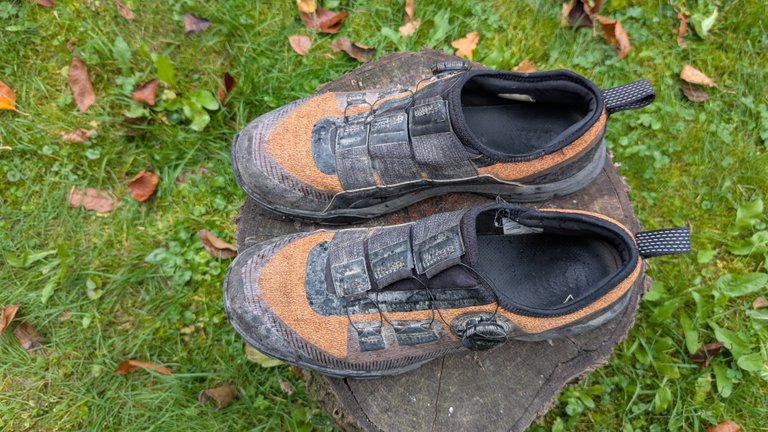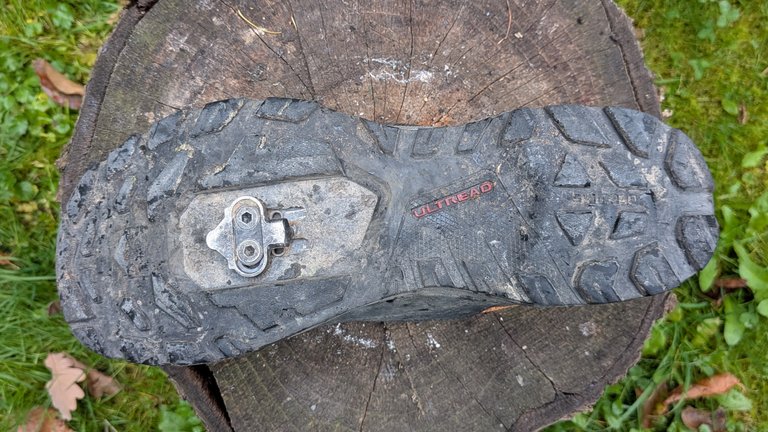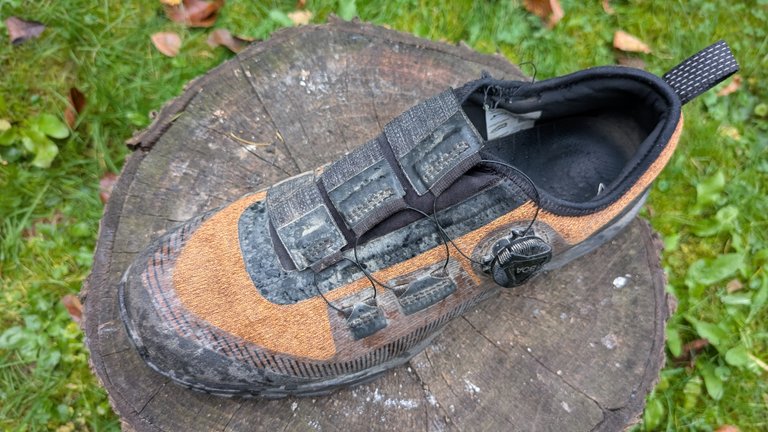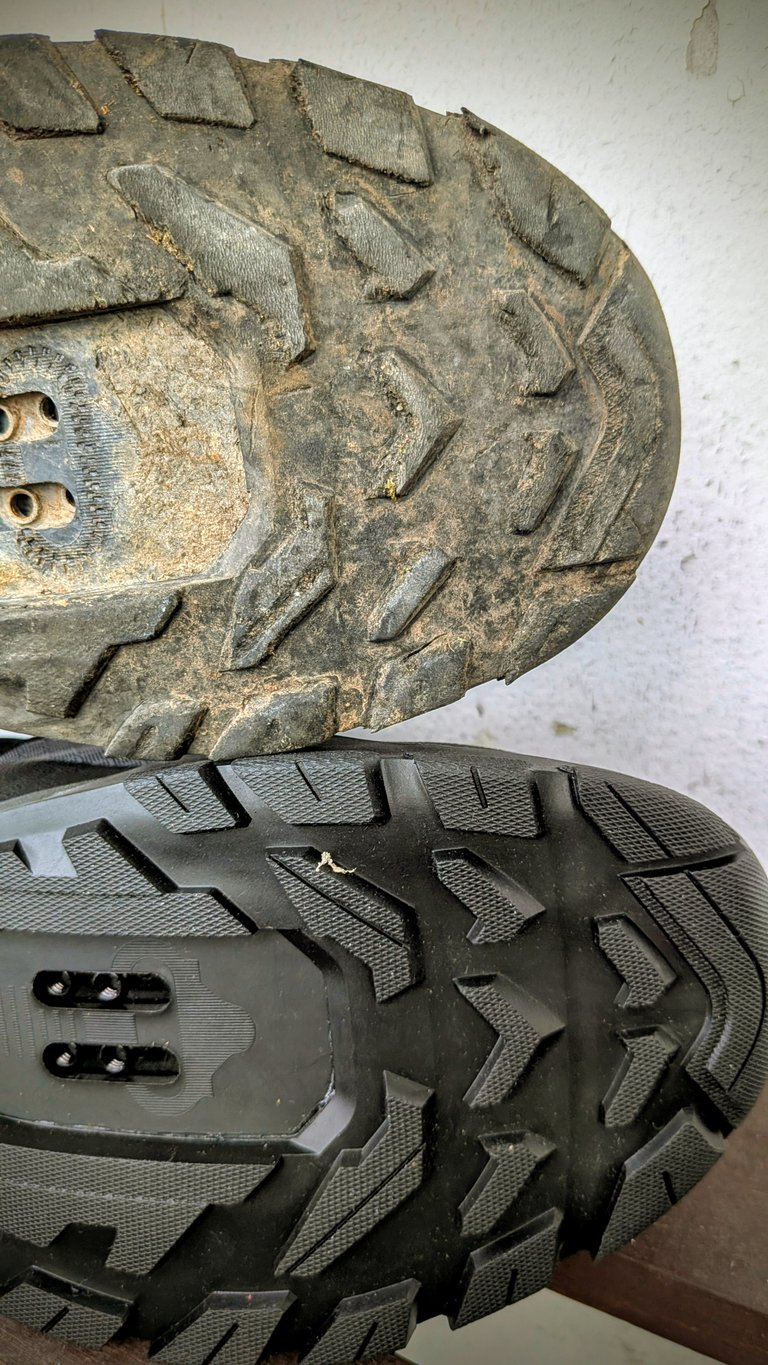Shimano SH-EX700 — bikepacking shoes

When I learned we’d be hiking over 30 kilometers during a bikepacking race, I considered which shoes to trust for that brutal task. I didn’t have any on hand I’d dare take. I went with the Shimano SH‑EX700, and in Kyrgyzstan they saw not only long hiking sections, but I forded rivers and streams in them almost daily, so they didn’t stay dry for long. How did they handle the challenge?
Are they stiff?
For efficient pedaling, shoes have to be stiff. Some touring shoes don’t meet that criterion, but Shimano nailed it here. They’re stiff enough, yet still very comfortable to walk in. They won’t be as stiff as race shoes nor as comfy as running shoes, but they offer a mix of both worlds. A stiff shoe is great for shorter rides when you occasionally want to really push, but on multi‑day trips you won’t have the legs to go full gas anyway. And the less force you’re putting down, the less sense a super stiff shoe makes.
They use an Ultread outsole with plenty of traction. As I mentioned, I hiked in them even in tough terrain in Kyrgyzstan and they always held me—except for a few sections with very slick mud, but those were extreme conditions.

Comfort
They close with a single BOA dial. I used to say I wouldn’t want shoes with just one dial anymore, but here it wasn’t a big issue. Only putting them on isn’t pleasant. In “regular” shoes I can open them wide and slide my foot in easily. Here I have to help with my fingers to get them on. And when your fingers are totally cracked, it’s unpleasant. A shoehorn would help.
As for the interior volume, it’s sufficient for me. They’re wider than typical shoes. I run a lot, wear barefoot shoes around town, so I have wider feet and had no problem. But every foot is different—some told me these SH‑EX700 aren’t wide enough, others that they’re just right.
In my experience, the first week they were nearly perfect—then they stretched a bit and were just right in width. As usual, I went half a size up to accommodate slightly swollen feet. You really need to be careful when putting them on. When I was tired and didn’t seat the ankle collar properly, I scraped the top of my instep badly.
The biggest drawback of these shoes is that even with the cleat as far forward as possible, it’s still not far enough forward for me—it’s too far back. For regular one‑day rides I probably wouldn’t pick them. I’d only accept that on longer bikepacking trips where I stop noticing it after a while. Shimano actually promotes this in the product video as an advantage of these shoes. And it’s true that for bikepacking many people prefer cleats positioned more toward mid‑foot.
Durability
In terms of durability—there are about two spots where the shoes started to come slightly unglued; nothing urgent so far. One seam gave a little—I probably rubbed it against the crank. The outsole is quite worn and the lugs are about halfway, in places down to a third. But, as I said, conditions were extreme. One thing I find interesting: the plate where the cleats bolt in is removable, which improves the shoes’ repairability.


Here’s before vs after Kyrgyzstan:


The pair weighs 706 grams.
Conclusion
Where would I take them? On a multi‑day MTB trip, or even a bikepacking race where I expect to walk a lot. The shoes are very comfortable for all‑day wear. I see only two downsides: cleat placement that doesn’t suit me and harder on‑off.
Advantages
- Comfortable
- Sufficiently stiff
- Wide
Disadvantages
- Hard to put on
- Cleat can’t go far enough forward
Overall rating: 4.5/5
Published | #Bikepacking
💬 No comments yet
What are your thoughts? 🤔 Feel free to ask any questions 📫